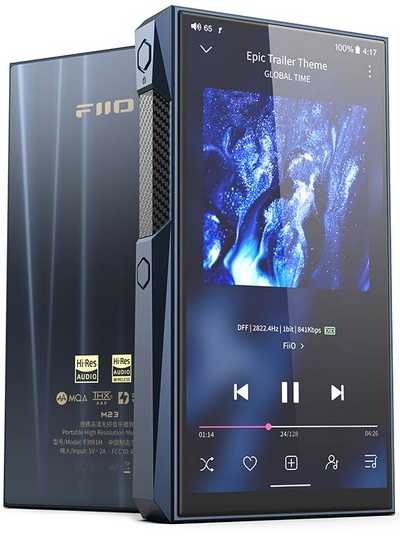INTRODUCTION

Believe it or not aside my PCs there are but only two devices I use daily, my smartphones and my Hi-Res music players. So aside my smartphones I also have a FiiO music player in my small backpack (whenever I'm using public transportation or going someplace on foot) and a FiiO music player in my car which I've connected wirelessly with my 6.1 sound system using the BTR3 Bluetooth amp again by FiiO (hard to find an 2DIN source that can beat it in terms of audio quality). Basically, I'm always interested in whatever music player FiiO is working on and since they recently launched the M23 Portable High Resolution Music Player I just had to get one in the lab, and I did roughly 2 months ago.
FIIO was established in 2007 and has experience in researching and developing countless portable music products of different types, and sell FIIO-branded products through sales agents worldwide. The brand name FIIO is composed of Fi (fidelity from HiFi) and iO (number 1&0), representing the real feeling and convenient life that digital brings to life. Meanwhile, the Chinese “飞傲” is the transliteration of FIIO, indicating the positive and innovative spirit as thriving as spring. FIIO is focused on product quality, adheres strictly to ISO9001 standards in quality management and works hard to attain the lowest repair-related product returns rate.
For the latest M23 music player (runs on Android 10 - Android 12 update soon) FiiO has paired a 5.5-inch bezel-less LCD screen (1440x720p / 18:9 ratio) with the Qualcomm Snapdragon 660 14nm SoC (Qualcomm Kryo 260 Octa-Core CPU @ 2.2GHz, Adreno 512 GPU, 2.4GHz/5GHz Wi-Fi 4 & Wi-Fi 5 support), 4GB LPDDR5 RAM and 64GB ROM (roughly 46GB available to the user). Once again FiiO has used an customized Android 10 OS for the M23 and typically inside its metal (dark blue aluminum and silver stainless steel versions available) enclosure we find a rich hardware configuration consisting by the AKM AK4499EXEQ stereo premium DAC (switched resistor DAC method with VELVETSOUND™ technology - 64bit, with 156dB S/N and -153 THD+N), AKM AK4191EQ multi-bit stereo premium digital data converter (also employes VELVETSOUND™ technology - 135dB S/N and -124 THD+N) , AWINIC AW32271 charger, four way balanced THX AAA 78+ headphone amp, dual power supplies (digital and analog), dual TI OPA1612 and TI OPA1662 Op-Amps, 8 Panasonic film capacitors, 4-stage 20-rail power supply, 28 tantalum capacitors, microSD card slot (supports cards up to 2TB in capacity), Bluetooth v5.0 chip (supports transmission of SBC/AAC/aptX/aptX HD/LDAC/LDHC and reception of SBC/AAC/LDAC audio codecs) and an 5500mAh 3.8V lithium polymer battery pack (supports quick charge 4.0 and PD 3.0 with PPS - up to 30W). Thanks to the above hardware configuration the M23 can decode up to 384kHz-32bit/DSD256 content while in USB audio mode it can go as high as 768kHz-32bit//DSD512 (supports DoP/D2P/Native). The M23 fully supports MQA 8x unfolding, is Roon ready and sports a 10-band EQ (PEQ supported), analog volume control, 3.5/4.4mm audio inputs/outputs and dual USB-C ports (charging and charging/data). One of the goals of this review (solely based on my curiosity) is to see whether the now old flagship M15 can hold its ground against the M23 so let's find out.

 O-Sense
O-Sense







.png)

